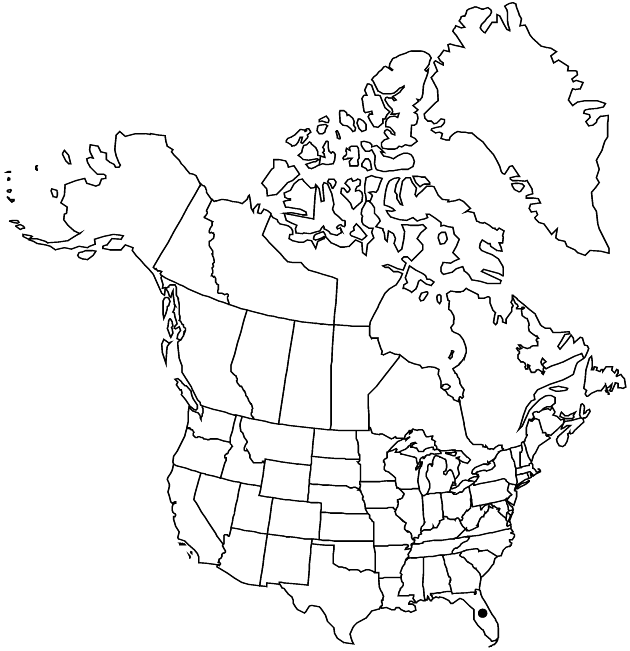Sphagneticola trilobata
Mem. New York Bot. Gard. 87: 114. 1996.
IntroducedIllustrated
Basionym: Silphium trilobatum Linnaeus Syst. Nat. ed. 10, 2: 1233. 1759 (as trilobatu)
Synonyms: Wedelia trilobata (Linnaeus) Hitchcock
Revision as of 22:12, 29 July 2020 by imported>Volume Importer
Leaf-blades 5–18 × 1–5+ cm. Ray laminae 6–15 mm. Disc corollas 3.5–6 mm. Cypselae 3–5 mm. 2n = ca. 40, ca. 50–54, 50–58, 56, ca. 56, 57, and 60.
Phenology: Flowering nearly year round.
Habitat: Ruderal, wet places
Elevation: 0–10 m
Distribution

Introduced; Fla., Mexico, West Indies, Bermuda, Central America, South America, probably in Asia, Indian Ocean Islands, Pacific Islands, Australia
Discussion
Sphagneticola trilobata is probably native to subtropics and tropics of the New World and probably introduced in Old World. It is increasingly cultivated and is to be expected as escaped or persisting in warm to hot, sandy spots anywhere in the flora area. Report of it from Louisiana has not been confirmed.
Selected References
None.
Lower Taxa
None.
"broader" is not a number.
... more about "Sphagneticola trilobata"
introrse +
connate +
herbaceous +
scarious +
absent +
hirsute +
papillate +
bristlelike +
continuous +
cuneate +
3-lobed;mostly trullate;lanceolate +
winged;ribbed;winged;ribbed +
1;15 +
stigmatic +
absent +
zygomorphic +
winged +
dimorphic +
3mm;5mm +
staminate +
staminate +
straight +
scabrous +
distinct +
proximal +
1;5 +
bisexual +
dispersed +
singly +
discoid +
singly +
indeterminate +
Present +
true +
surrounding +
obconic +
1cm;5cm +
opposite +
cauline +
lance-triangular +
2-carpellate +
inferior +
attached +
anatropous +
persistent +
fragile +
falling +
absent +
coroniform +
tough +
thick +
absent +
connate +
persistent +
distinct +
falling +
Mem. New York Bot. Gard. +
1996 +
pistillate +
absent +
fertile +
paleate +
convex;conic +
fibrous +
exalbuminous +
modifed +
2;3 +
alternate +
branched +
prostrate +
continuous +
2-branched +
papillate +
Sphagneticola trilobata +
Sphagneticola +
species +
campanulate +
shorter +
cylindric +
shorter to longer than campanulate +
perennial +
